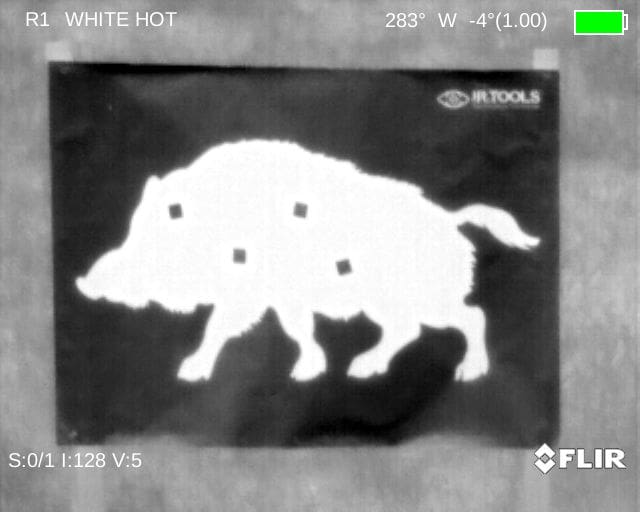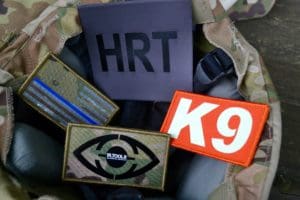Is the purchase of a thermal scope on your radar?
Perhaps you already own one.
In either case, you are not alone.
According to a 2021 Vantage Research Group study, the thermal weapons market is expected to reach USD 21.32 billion (with a B!) by 2028. That is a lot of thermal scopes coming to your range or club!
So how do you learn to use your thermal scope?
With a thermal target!
Your go-to paper targets are useless with a scope.
Therefore, a thermal target is a must–have for your zeroing and downrange shots. It provides an excellent life-like target (unlike a paper target) and accelerates your learning curve.
Let’s dive in and learn why pairing your thermal scope with a thermal target is key.
What is a Thermal Scope?
First, to help you understand the overall technology, a thermal scope is an optical system that sees invisible (heat) energy in a scene. People, animals, natural or manmade objects all give off infrared energy or heat. Your naked eyes do not see this energy.
The thermal scope sees this energy. As a result, you (the shooter) will see this energy. A thermal scope is effective in daylight or darkness.
Why a Thermal Target?
Unlike a paper target, a thermal target is visible to a thermal scope. Therefore, a ready-made thermal target will help you learn and quickly master your scope.
No cumbersome jerry rigging required.
Pairing your thermal scope with a thermal target gives you immediate feedback for your shots.
There are 2 categories of thermal targets – Passive and Powered. Powered thermal targets require a power source (batteries or electric), while a passive thermal target does not.
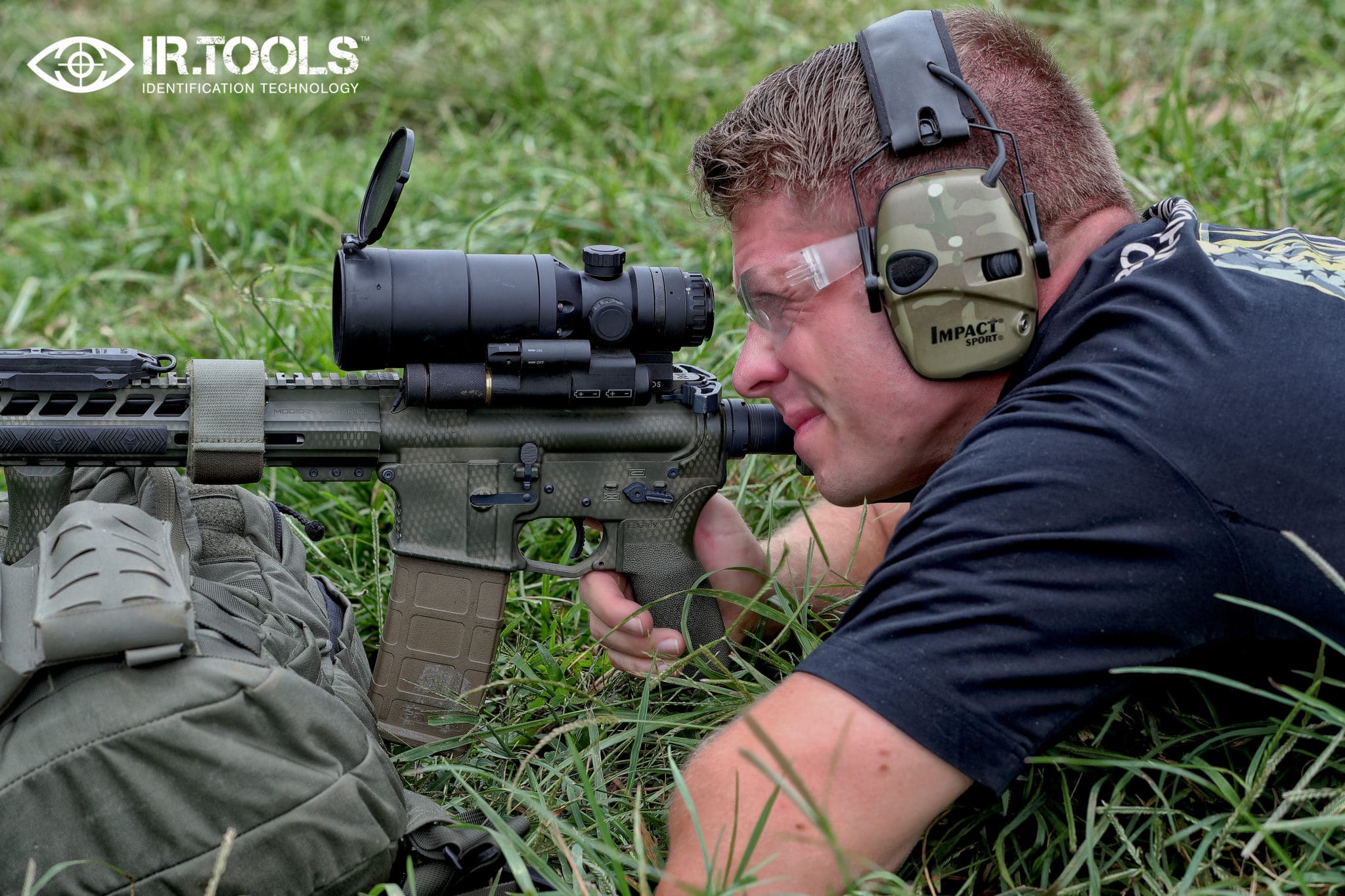
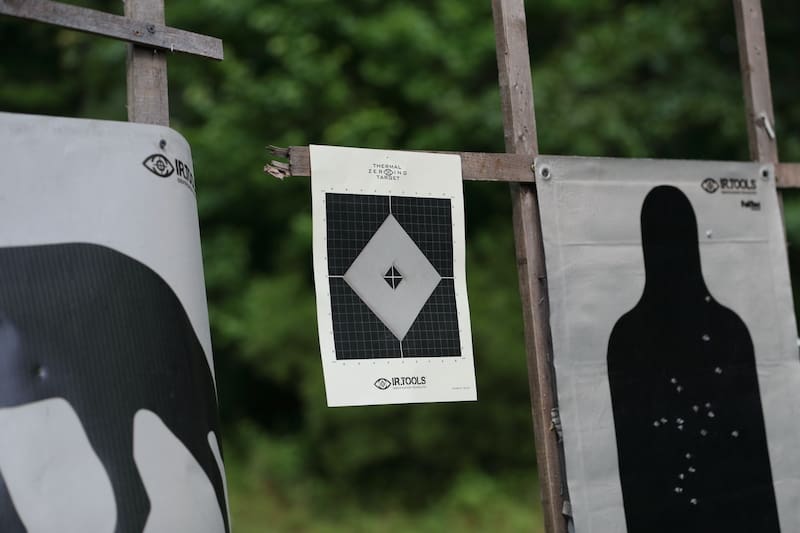
What is a Thermal Target?
Thermal target material is a specialized film that reflects heat energy in the environment to create a practice target for the shooter. The target is a contrast of color seen only through the thermal scope. This contrast in the black or white-hot palette settings is seen in shades of black, white and gray.
Sometimes more colorful palettes are selected by the shooter. Learn more about your color palette below.
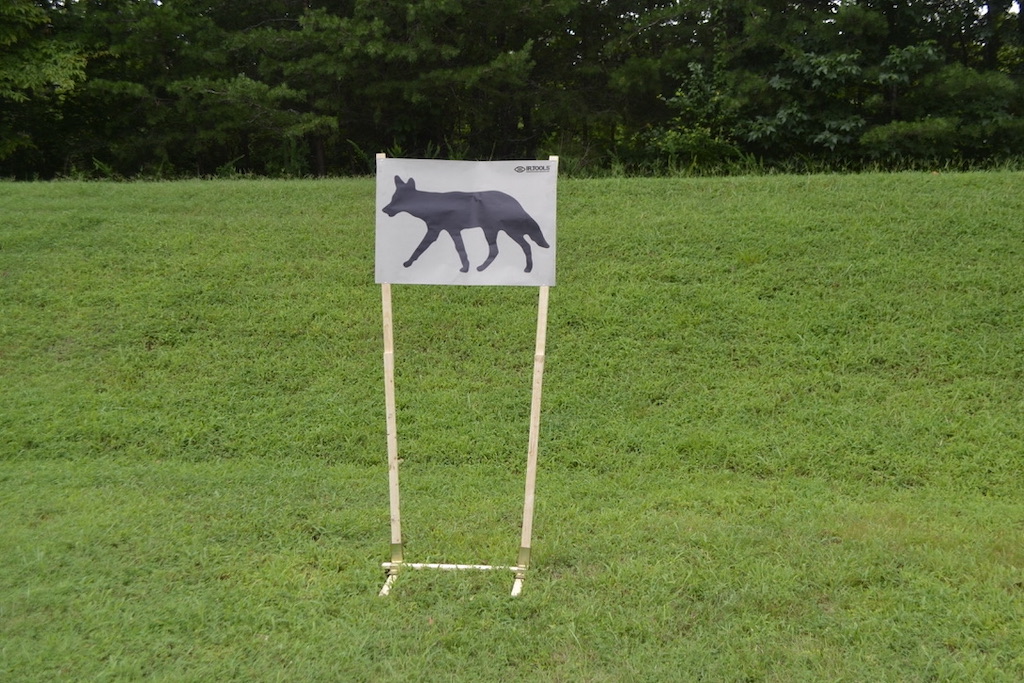
Passive Thermal vs Powered Thermal Targets
In the end, a passive target and a powered target produce the same results – a thermal contrast. Keep in mind they are built with thermal material so the shooter will see a scene of contrasting colors in his viewfinder. The colors of this scene vary depending on the palette setting chosen by the shooter.
While functionally Passive and Powered targets are similar there are advantages and disadvantages to both.
Compare and decide for yourself which target best suits your training regimen.
Shooting Indoors or Outdoors?
Passive thermal is an outside target only and will not work inside at all. The target contrast is best placed outside, in the open on a clear, cloudless day.
Powered thermal targets work indoors, outdoors, and in obstructed areas. The target is not affected by clouds or temperatures. Therefore, the target maintains a consistent contrast regardless of the environment. Your target training is seldom interrupted because of weather conditions.
How Easy is the Set-Up?
The passive target travels light, and you will like the flexibility. Mount the passive target onto any target backer. Some manufacturers require the passive target to lean back at a 15º angle.
IR.Tools Upright Passive Thermal Targets require no lean and the shooter can shoot from multiple angles. A simple mount, aim, and shoot!
The powered thermal target requires a handful of logistics and pre-planning before engaging. Cables, extension cords, or batteries must be on hand before shooting.
The target is light, portable, and takes only 4 minutes to power up the contrast. Because of the power element, the target never needs to lean at a 15º angle.
What are the Cost Differences?
The passive thermal costs less to operate. After the initial purchase, which is dependent on the size and volume of targets, expenses are minimal. The life of the target is extended with low-cost thermal pasters.
Depending on the caliber size, expect over 500 rounds.
The heating element in the powered thermal target and the extra cables, batteries, etc., will add an additional cost. Like the passive target, thermal pasters will extend the target’s life.
Depending on the caliber size, expect over 1000 rounds.
What is the Shooter Position?
A passive target that leans back 15º requires the shooter to be at a 90º angle (directly in front) for optimal contrast.
An Upright IR.Tools passive target projects a contrast from 90º – 15º, therefore multiple shooters can shoot at the same time from various angles.
The powered target contrast is sharp and distinct from various angles and great distances. Multiple shooters can shoot at the same time from various angles.
What are My Safety Concerns?
The passive target is extremely safe.
Put aside any worries about electric shock or fire because it will not happen.
The powered target requires extra safety precautions. Misuse or mishandling of targets could lead to electric shock, injury or fire. The higher the voltage (120v), the more dangerous the shock. Warnings and precautions should always be reviewed and adhered to.
Understanding Your Scopes Thermal Color Palette
The number of color settings on a thermal scope is daunting, especially for a first-time shooter. The shooter will see that a thermal target looks different for each color setting. There is no formula for selecting a color palette. In the end, it comes down to personal choice, but there are points to consider for each palette.
Palette names include but are not limited to:
White Hot, Black Hot, Ironbow, Rainbow, Arctic, and Sepia. White Hot and Black Hot are the most popular settings used, especially in law enforcement and among sportsmen.
White Hot detects the warm temperatures in white and cooler temps in black to various shades of gray. Black Hot detects the warm temperatures in black and cooler temps in white to various shades of gray.
Remember that your scene’s temperatures don’t change, just the color pattern. So it is important to understand what temperature each color represents.
Not all color palettes are best suited for every job or situation. For instance, looking at a uniformly hot scene, such as a Texas plain, Black Hot will pick up faint movements better than White Hot.
So, while it would be nice to be able to recommend a specific palette in each situation, trial and error – along with familiarity – is the best formula to limit mistakes and aid in wise decisions.
Generally, a thermal scope will display cooler temperatures in black, blue, and purple colors and warmer temperatures in brighter red, orange, yellow, and white colors. As previously described, White Hot and Black Hot are the exceptions to this rule.
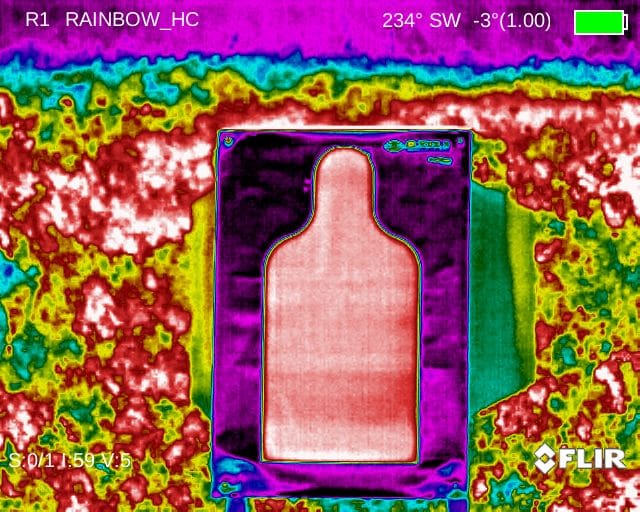

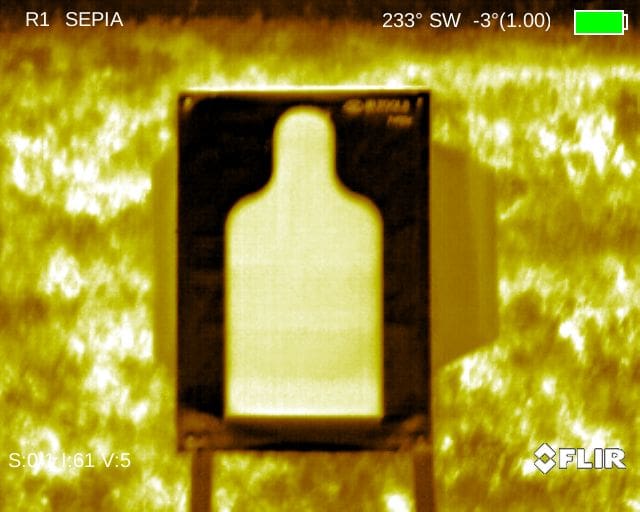

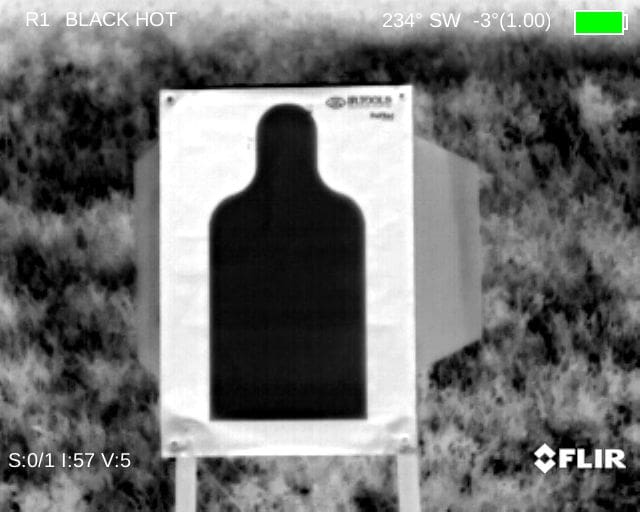
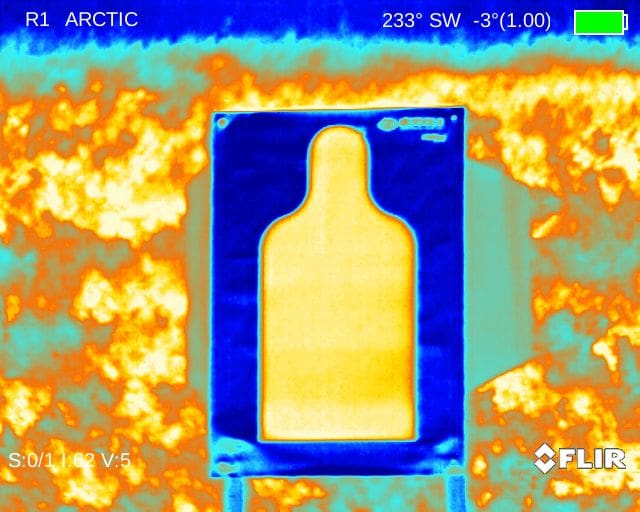
Avoid 2nd Guessing Your Shots
Pairing your thermal scope with thermal target training will help avoid 2nd guessing your shots.
In the end, mastering your scope with consistent practice and quality shots will produce a prepared and confident shooter. Exactly what you are aiming for!
IR.Tools Suite of Passive and Powered Training Targets
IR.Tools has all the bases covered for your thermal training targets.
Our Upright Thermal target training kits were built with your thermal scope in mind.
Available in the IR.Tools Shop! Buy Now.
- Thermal Zeroing Kit
- Universal Zeroing Kit
- 25m Zeroing Pasters
- 50m Zeroing Pasters
- Passive Boar and Coyote Kit – 1 zeroing, 1 downrange, 24 pasters
- Powered Boar and Coyote Kit
Contact IR.Tools or Dealers can call for quote:
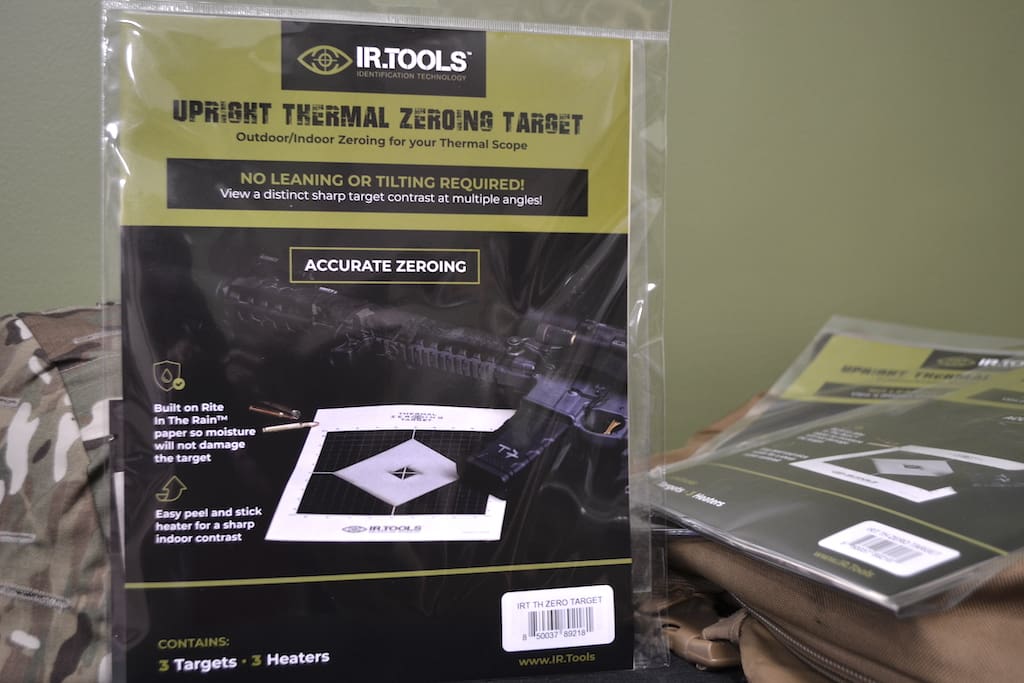
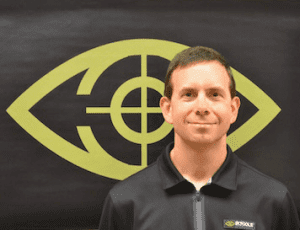
Since 2006, Tom has been the driving force behind IR.Tools, dedicated to delivering top-notch infrared solutions to the military, law enforcement, and sportsmen communities.
What began with a single infrared patch has blossomed into a comprehensive store featuring hundreds of IFF patches, vehicle IFF, an extensive suite of thermal training targets, and tools for drone pilots.
Beyond his innovative products, Tom is passionate about educating users on infrared technology and showcasing how advancements in IR can enhance their operations.
Tom holds an MS in Mechanical Engineering from the University of Maryland and an MBA from Regents University.

